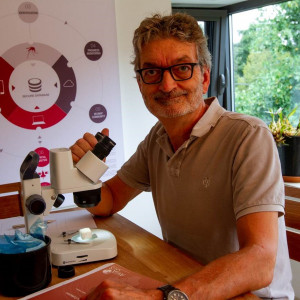 \
&
Contact us
\
&
Contact us
 \
&
Contact us
\
&
Contact us
Published on | 2 years ago
Programmes Digital, Industry & SpaceThe European Commission has published the following update for a number of cluster 4 calls that are currently open for submission:
There has been an update of the “Detailed Budget Table” Excel template. A new template has been republished for your kind consideration and use.
An additional paragraph has been added to the instructions tab, explaining how to save the detailed budget table and how to upload it in the submission system:
“After you completed this Excel workbook, you must also complete the table ‘Budget for the proposal’ in Part A of the proposal, entering the requested EU contribution for each participant. Fill the Part A budget table using the total for each participant from the sheet ‘Lump sum breakdown’ in this Excel workbook. The format of this Excel workbook is .xlsm because it uses macros to generate sheets and make calculations automatically. Always save it as .xlsm. However, this format cannot be uploaded to the submission system for security reasons. Therefore, to submit the completed workbook, save a copy as an .xlsx or .xls document (and not as .xlsm) and upload it to the proposal submission tool at Step 5 of the submission process. Always keep a copy of the original .xlsm file. To save the workbook as .xlsx document, use the action button in the sheet “Instructions”. Alternatively, click on “File” and then “Save as”; in the “Save as” dialog box, choose “.xlsx” or “.xls” from the “Save as type” dropdown list.”
You can still use the template initially available in the submission system if you wish to, but please be aware of the instructions on how to upload and save the file.
This update applies to the following call topics:
Source: Funding & Tenders Portal
We offer news and event updates, covering all domains and topics of Horizon Europe, Digital Europe & EDF (and occasionally, for ongoing projects, Horizon 2020).
Stay informed about what matters to you.
By signing up, you can opt in for e-mail notifications and get access to
a personalised dashboard that groups all news updates and event announcements in your domain(s).
Only for stakeholders located in Flanders

Avia-GIS is a Belgian innovative SME established in 2001. They have built research and public authority trust over the past 19 years and developed a unique, disruptive software suite - VECMAP® - that supports society to overcome one of its important health threats, the spreading of Pests of Public Health importance.
With the help of a Horizon 2020 SME Instrument Phase 2 project, they will be able to add Integrated Pest Management functionalities and go to the market. With the grant, that was an essential component of their second investment round, Avia-GIS aims at raising its revenue from the current 2 M€ to 14.2 M€ in 2024, and increase the headcount from 15 to 58.